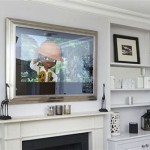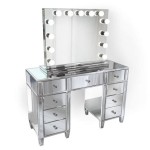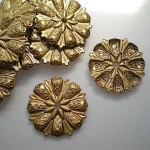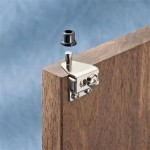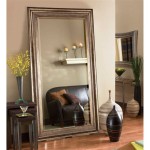Beveled Edge Mirrors for Bathrooms
Beveled edge mirrors offer a touch of elegance and sophistication to any bathroom. The angled edge creates a frame-like effect, adding depth and visual interest without the need for a traditional frame. This article explores the benefits, considerations, and options available when choosing a beveled edge mirror for a bathroom.
Key Benefits of Beveled Edge Mirrors
Beveled mirrors offer a range of advantages that make them a popular choice for bathrooms:
- Enhanced Aesthetics: The beveled edge catches and reflects light, creating a sparkling effect that brightens the bathroom.
- Frameless Design: The bevel itself acts as a decorative frame, providing a clean, modern look and maximizing the reflective surface.
- Versatility: Beveled mirrors complement various bathroom styles, from traditional to contemporary.
- Increased Perceived Size: The reflective qualities of the bevel can make the bathroom appear larger.
Choosing the Right Size and Shape
Selecting the appropriate size and shape is crucial for maximizing the impact of a beveled edge mirror. Consider the following factors:
- Vanity Size: The mirror should be proportionate to the vanity. A general guideline is to choose a mirror slightly narrower than the vanity.
- Wall Space: Ensure adequate space around the mirror to avoid a cramped appearance.
- Bathroom Layout: The mirror's shape should complement the overall bathroom design. Rectangular, square, oval, and round shapes are common options.
- Ceiling Height: For bathrooms with lower ceilings, a vertically oriented rectangular mirror can create an illusion of height.
Bevel Width and Depth
The bevel's width and depth significantly influence the mirror's overall appearance. Understanding these aspects is important for achieving the desired aesthetic:
- Width: The bevel width refers to the angled edge's surface area. Wider bevels create a more dramatic effect, while narrower bevels offer a subtle touch.
- Depth: The bevel's depth refers to the thickness of the glass removed to create the angle. Deeper bevels enhance the three-dimensional appearance.
- Proportion: The bevel's width and depth should be proportionate to the mirror's overall size. A large mirror can accommodate a wider and deeper bevel, while a smaller mirror may benefit from a more delicate bevel.
Mirror Thickness and Quality
The thickness and quality of the mirror glass are essential for durability and longevity:
- Thickness: Thicker mirrors are generally more durable and less prone to warping or distortion. A minimum thickness of ¼ inch is recommended for bathroom mirrors.
- Silvering: High-quality silvering on the back of the mirror ensures a clear, undistorted reflection. Look for mirrors with a protective backing to prevent silvering damage.
- Edge Quality: The beveled edge should be smooth and polished, free from chips or imperfections.
Installation Considerations
Proper installation is crucial for the safety and functionality of the beveled edge mirror. Consider these factors:
- Wall Type: Different wall types require different mounting hardware. Ensure the chosen hardware is appropriate for the bathroom wall.
- Weight: Beveled mirrors can be heavy, particularly larger sizes. Adequate support is essential to prevent the mirror from falling.
- Moisture: Bathrooms are prone to moisture. Use sealant around the mirror's edges to prevent water damage.
- Professional Installation: For larger or heavier mirrors, professional installation is recommended to ensure proper mounting and safety.
Maintenance and Cleaning
Maintaining the pristine appearance of a beveled edge mirror requires regular cleaning:
- Gentle Cleaners: Avoid abrasive cleaners that can scratch the mirror's surface. Use a glass cleaner specifically designed for mirrors.
- Soft Cloths: Use a soft, lint-free cloth to clean the mirror's surface and prevent streaks.
- Regular Cleaning: Regularly clean the mirror to remove water spots, toothpaste splatters, and other common bathroom residues.
Styling and Design Ideas
Beveled edge mirrors can be incorporated into various bathroom design styles:
- Contemporary: A frameless rectangular beveled mirror complements a minimalist, contemporary bathroom design.
- Traditional: An oval or round beveled mirror adds a touch of classic elegance to a traditional bathroom.
- Transitional: A beveled mirror with a simple, understated frame blends seamlessly with a transitional bathroom style.
- Lighting: Pair the beveled mirror with appropriate lighting to enhance its reflective qualities and create a brighter, more inviting bathroom.
Cost Considerations
The cost of beveled edge mirrors varies depending on several factors:
- Size: Larger mirrors generally cost more than smaller mirrors.
- Shape: Complex shapes, such as ovals or circles, may require more intricate manufacturing processes, potentially increasing the cost.
- Bevel Width and Depth: Wider and deeper bevels typically add to the overall cost.
- Glass Quality: Higher-quality glass and silvering contribute to a higher price point.
- Installation: Professional installation adds to the total expense.

Deco Mirror 24 In W X 36 H Framed Rectangular Beveled Edge Bathroom Vanity Champagne Silver 1228 The Home Depot

6mm Bevel Edge Frameless Wall Mounted Bathroom Mirror China Glass Made In Com

Square 30 X Beveled Glass Edge Modern Frameless Wall Mirror P1424 Lamps Plus

Budget Bevel Edge Bathroom Mirror Range Luxe Mirrors

Bathroom Mirror 35 50cm 5mm Thickness Bevel Edge

Large Wall Mirror Beveled Edge Frameless Bath Bedroom Cloakroom Vanity Mirrors

Montana Bevel Edge Bathroom Mirror Range Luxe Mirrors

Hbezon Rs 48 In W X 36 H Rectangular Beveled Edge 3 Colors Dimmable Led Anti Fog Memory Wall Mount Bathroom Vanity Mirror Hb 3648 Sl The Home Depot

Everything You Need To Know About Mirror Edges Martin Glass

Bathroom Mirror Edge Rectangle Square Myhomeware

